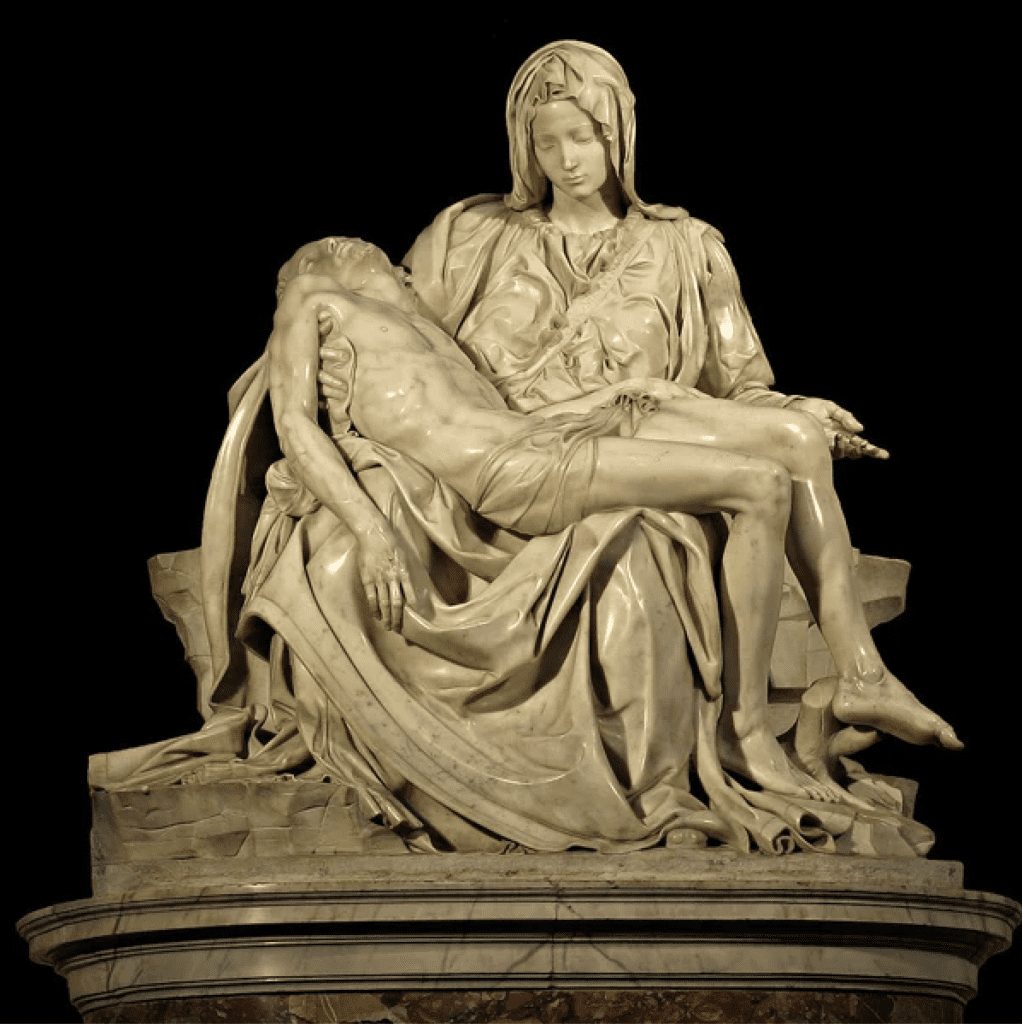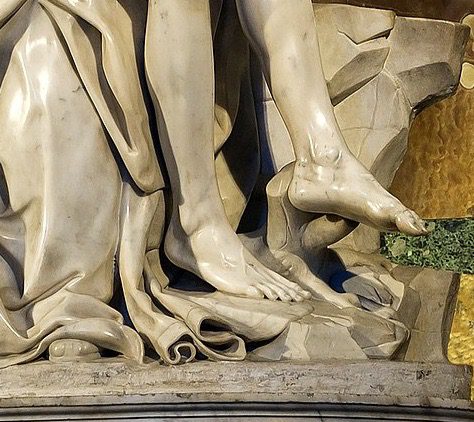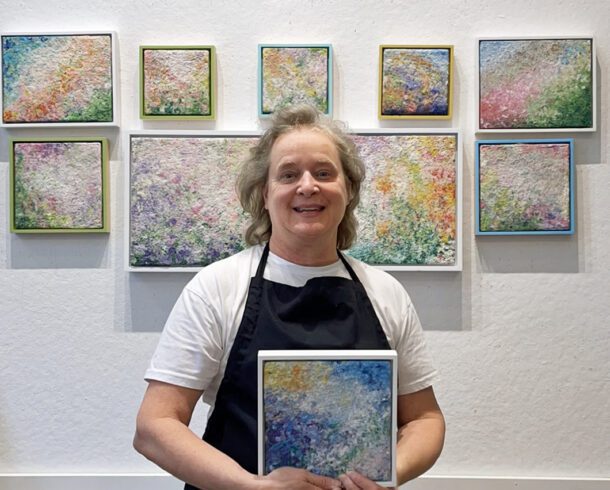1. The word pieta is Latin for pity. The idea that one can feel emotion, in this case, sorrow or pity, through viewing a work of art is in keeping with the Renaissance ideal of humanism, in which the human experience is worthy of contemplation and reflection.
2. The composition is in the shape of a triangle, a reference to the trinity.
3. The Pieta is a northern Renaissance concept. Mary holding her dead son after the crucifixion is not mentioned by any of the gospel writers.
4. If Mary stood up, she would be much larger in scale than Jesus. This is a compositional decision on Michelangelo’s part to ensure she remains central to the composition.
5. Mary is youthful, much younger looking than she would be if Jesus is said to be 33 years old upon his death. Her youth and beauty are in keeping with Renaissance ideals of beauty in art.
6. Mary’s breastplate reads “Michelangelo the Florentine made this.” This is in reference to Rome, where the sculpture was carved, being a separate City-State from the City-State of Florence, where Michelangelo is from. Florence and Rome were rivals at the time and Michelangelo wanted to celebrate the home team.
7. This is the only work of art Michelangelo ever signed. He signed it because of rumors that the sculpture was the work of an older artist.
8. Christ’s left foot is already experiencing rigor-mortis, the stiffening of the joints upon death. Michelangelo was aware of rigor-mortis from dissecting human bodies, which was forbidden by the Church at the time. He felt enormous guilt for engaging in this practice, however, the knowledge he gained strengthens the emotional impact of the sculpture.
9. He believed the pieta was already in the marble, he just needed to help the composition release itself from the confines of the stone. He slept in the quarry at night so he could see the sunrise over the block of marble, and “saw” the sculpture within. Thus, he took little credit for actually carving the sculpture.
10. The finished sculpture was rolled on logs to St. Peter’s from Michelangelo’s studio by a group of carpenters during the night.



